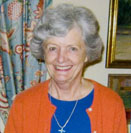Greenhills School FAQs
Q. How do I know if my child is dyslexic?
Clues that dyslexia is the cause of your child’s academic problems include difficulty with spelling when writing sentences, sometimes writing or reading “d” for “b”, “p” for “q” or “form” for “from” or difficulty with legible handwriting. If you suspect your child is dyslexic, Greenhills can give your child a screening test.
Q. How is Greenhills program different than what public schools offer?
Many public and private schools now offer Orton-Gillingham derived programs. Wilson and Language! are spinoffs of our original Orton Gillingham approach. Greenhills’ program is different because it is diagnostic and prescriptive. Flexibility is the key to effective re-teaching of reading. Case studies are written for each child and each child is taught according to his or her prior knowledge and specific strengths and weaknesses in reading, writing, and spelling. Our Orton-Gillingham academic program teaches students to read close to or above grade level and at the level of their abstract thinking ability within two to four years.
Q. How does The Orton Language Therapy program work?
The program has two key elements: the careful analysis of the English language and the teacher’s specific multisensory presentation and the student’s multisensory response in a structured, cumulative sequence.
The program provides students with a clear understanding of language rules, from basic phonetics to sophisticated concepts of word structures and derivations.
It is important for dyslexic students to have an orderly, systematic way of working out words for both reading and spelling. A daily, written phonics drill is based on an alphabetic approach to language retraining that ties together the visual, auditory and kinesthetic pathways of the brain’s language association area. By learning these rules in the Orton-Gillingham daily therapy class, students are given tools to use language effectively in literature, composition and in other subjects.
Because the student is using all senses at the same time to learn — the visual (see it), the auditory (say it) and kinesthetic (feel it) — a more thorough understanding of language is created.
Q. Will my child be learning what is taught in public schools?
Course offerings contain the same range of content areas available in public schools. The Basic Education Plan of North Carolina is implemented through the goals and objectives of the Standard Course of Study. It is followed in each subject except reading,which follows the Principles of Instruction for Written Language of the International Dyslexia Association.
Q. What does Greenhills have to offer that other schools don’t?
The educational program follows a clinical, medical model adopting the twelve principles of the International Dyslexia Association and The Academy of Orton-Gillingham Practitioners and Educators (AOGPE) for oral and written language development. It is diagnostic and prescriptive.
These principles state that instruction should be individualized, multidisciplinary and multisensory. The letter-sound system of the English language must be taught both synthetically and analytically in a sequence that is systematic and cumulative. The teaching must be done in a way that allows the student to understand the reasons for what he or she is learning, so that teaching is cognitively based. Finally, teaching must be emotionally sound with the development of the student’s ability to communicate the paramount goal.

